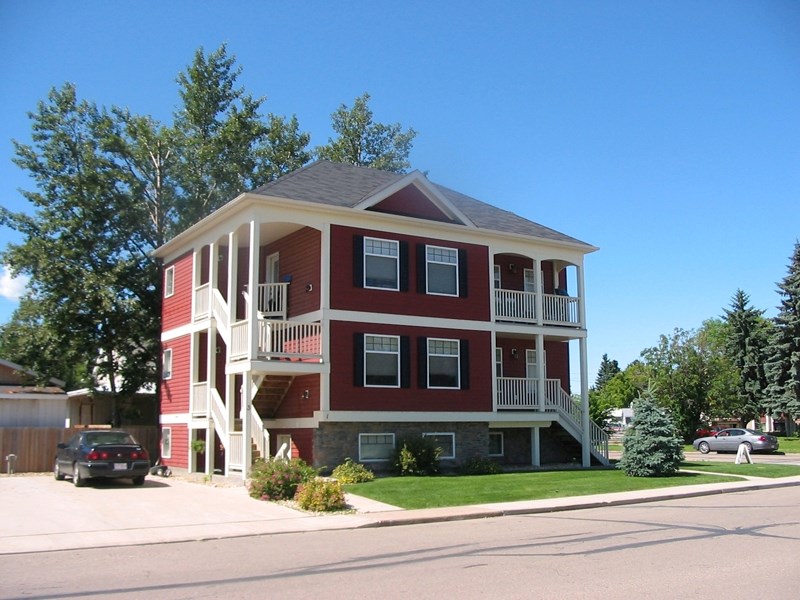Innisfail town council finalized a land-use bylaw amendment to provide a definition for “stacked row housing.”
Town council carried second and third readings of the bylaw amendment during its regular meeting on May 13 following a public hearing on the matter.
Administration came up with the definition in response to a proposed multi-unit residential development along 48th Street where it is zoned for residential multi-density properties. The proposed development does not apply to the available “apartment” or “row housing” definitions. Without an appropriate definition the town is unable to process an application for the developer.
But stacked row housing is now defined in the land-use bylaw as a building holding three or more dwelling units where each unit may have a separate access to outside grade and where dwelling units may be situated either wholly or partially over or under other dwelling units.
“The new definition is for ‘stacked row housing,' and that is to somewhat bridge a gap between apartments and fourplexes,” said Craig Teal, director of planning and development.
The definition will allow for multi-unit developments where entrances to each individual unit may differ.
“Some dwellings may still share one internal staircase while others may have direct access out to grade,” Teal said.
The bylaw amendment allows stacked-row housing as a discretionary use in residential medium density districts. Stacked row housing is now a permitted use in residential multi-density districts.
The town received no public feedback on the bylaw amendment in response to an advertisement published in the local newspaper and no one spoke for or against the matter at last week's public hearing. But Coun. Jason Heistad complimented photos of developments included in a package to council that matched the definition for stacked row housing.
“That is how you infill in city centres if you want to do a good job,” Heistad said in reference to the photos.
Staff recommended the bylaw amendment, stating the new definition provides additional flexibility for developers in residential multi-density districts, and in some cases, residential medium density districts. Administration believes such developments can be architecturally pleasing and designed to complement the appearance of the neighbourhood.
“If any of these showed up on the docket for development for permanent approval, I would probably be pretty happy,” Teal said.
Town council also carried second and third readings of another bylaw amendment that would allow a proposed expansion at a residential property in the central business district where expansion is not allowed on existing dwellings. But town council approved the amendment to allow up to 1,500 square feet of combined floor space on all floors above grade on that particular lot as a discretionary use.
During a public hearing on the matter, local school trustee Penny Archibald spoke on behalf of the resident. She explained that the property has existed since 1935 and because of health reasons, the current resident wishes to have a new staircase to the basement built.
“She just wants to be able to get down to do her laundry,” Archibald said.




